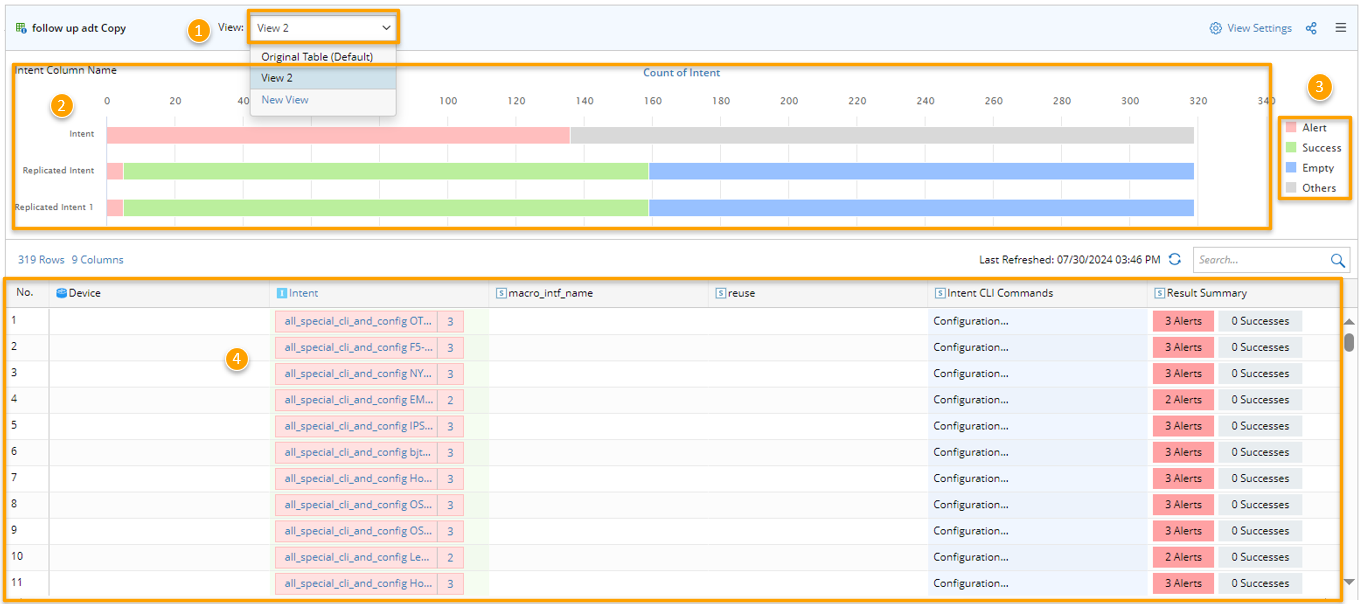R12.1-JA-2025June05
ADT View
In some cases, a large-sized ADT may contain too much data for different analyses, making it difficult for users to view all the details of this ADT. Now, ADT supports multiple views, each view presenting different customized data to users, so that users can browse different sets of data from one ADT as needed. An ADT view mainly consists of a table structure showing data from the original ADT and a statistical chart (optional) for displaying the result summary and filtering useful data.
Here are two typical scenarios of using ADT view:
- Use different ADT views to diagnose specific network issues. For example, use ADT view ‘BGP Core Device’ of ADT ‘BGP Neighbor’ to diagnose the BGP configuration of all BGP core device, and use ADT view ‘BGP Reflector’ of ADT ‘BGP Neighbor’ to diagnose the BGP reflector status.
- Allow different users to browse the set of data of their interest in different ADT views. For Example, User1 is the administrator of site ‘Boston’ and User2 is the administrator of site ‘Beijing’. User1 uses the ADT view ‘Boston Devices’ of the ADT ‘Check Device Interface Status’ to check the interface status of all Boston devices, while user2 uses the ADT view ‘Beijing Devices’ of the ADT ‘Check Device Interface Status’ to check the interface status of all Beijing devices.
Key Components of ADT View
The following is a sample ADT view:
- View List: From View list, users can create a view, switch between views and set a view as the default view.
- Chart: Optionally, chart is added to show the ADT data result summary or filter the useful data. Chart of various types can be added to the top of a view to display specified data intuitively, with different color elements in the chart indicating different types of data. The system offers several ways of grouping and sorting chart data.
- Legend: Click the color block icon in this area to filter the data in the Chart and the data displayed in the table structure below.
- Table Structure: The table in a view that presents specified set of data filtered from the original ADT.